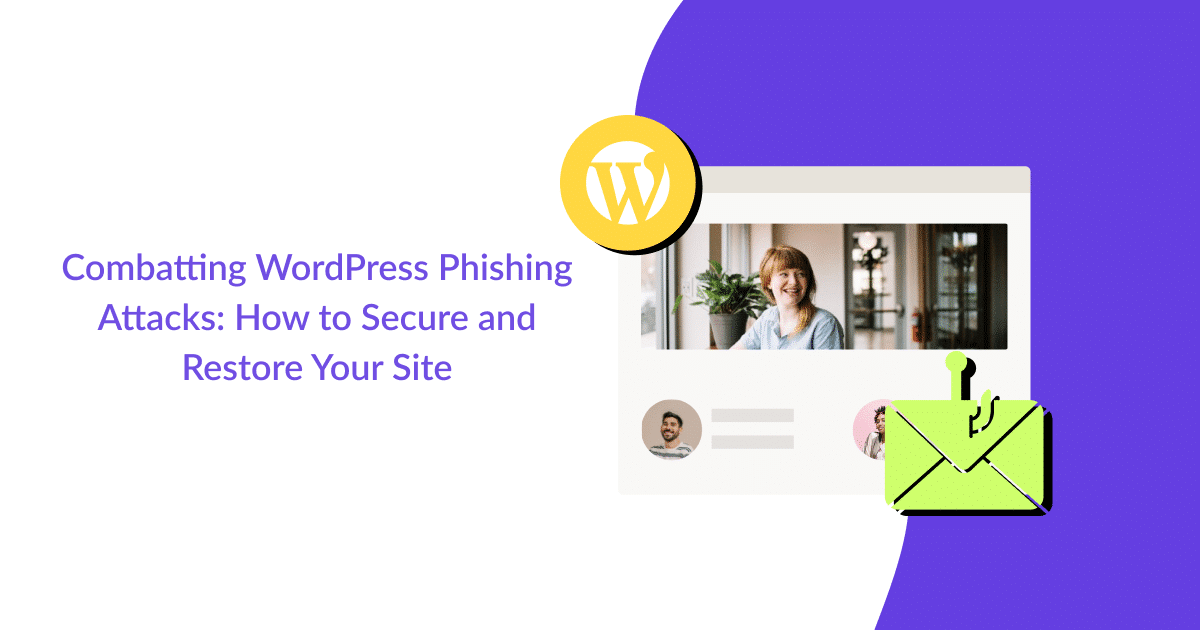
Combatting WordPress Phishing Attacks: How to Secure and Restore Your Site
March 14, 2024
In the vast ocean of the internet, there’s a particularly menacing predator: the WordPress Phishing Attacks. WordPress sites, due to their popularity, are attractive targets for these digital sharks. In this post, we dive deep into understanding WordPress phishing hacks, how you can recover if you’re the victim, and measures to protect your site for the tranquil digital seas ahead.
Table of Contents
Understanding WordPress Phishing Attacks
Phishing attacks cunningly mimic legitimate entities to steal sensitive data, like login credentials or credit card numbers. In WordPress, such hacks might involve a fake login page mimicking your WP admin portal or emails directing to a counterfeit site, tricking users into handing over their details.
Identifying a WordPress Phishing Hack
Spotting a phishing hack involves vigilance. Unusual site activity, unfamiliar pages or posts, unexpected emails sent from your domain, and complaints from users about suspicious activity are red flags. It’s critical to act fast once you’ve identified such inconsistencies to prevent further damage.
Steps to Recover From a WordPress Phishing Attacks
- Immediate Response:
- If you suspect a WordPress Phishing Attacks, the first step is to change all passwords associated with your WordPress site.
- Inform your hosting provider; they might be able to provide immediate assistance.
- Identify and Remove Malicious Content:
- Check your site for any unfamiliar content, such as new pages, posts, or plugins, and remove them.
- Scan your site with a reliable security solution to find and eliminate hidden threats.
- Restore From Backup:
- If the attack altered your site significantly, restoring a clean backup is the fastest way to recover.
- Update Everything:
- Ensure all themes, plugins, and WordPress itself are updated to their latest versions.
- Inform Your Users:
- If user data was compromised, it’s best practice (and often legally required) to inform your users of the breach.
Proactive Measures to Secure Your WordPress Site
- Regular Updates:
Keep WordPress, and all themes and plugins, updated to protect against known vulnerabilities. - Use Strong Passwords and Two-Factor Authentication:
Enhance login security to reduce the risk of unauthorized access. - Implement Security Plugins:
Use security plugins to add firewalls, limit login attempts, and more. - Regular Backups:
Schedule daily backups so you can always restore a clean version of your site if needed. - Educate Your Users:
Inform your users about the importance of security and how to spot phishing attempts.
How WP Gauge Provides an Extra Layer of Security
WP Gauge understands the devastation WordPress Phishing Attacks can bring. That’s why we offer comprehensive security solutions including regular scans, robust firewalls, and immediate alerts on suspicious activity. With WP Gauge, not only is your site monitored and protected, but we also ensure quick recovery, should the worst happen. Our support team is always on standby to assist you through any security concerns, making the digital seas a safer place for your WordPress voyage.
Conclusion
WordPress Phishing Attacks are a pervasive threat in today’s digital world, but with vigilance and robust security measures, they are manageable. By understanding what to look for and how to respond, you can safeguard your WordPress site against these malicious predators of the cyber sea. Have you taken the necessary steps to secure your site against phishing attacks?
;)
Safwan F
Safwan is the WordPress person at WP Gauge who loves sharing experiences with others who are just as enthusiastic about WordPress. On the WP Gauge platform, he shares practical tips and tricks inspired by real-life situations, making web security easy for everyone to understand.